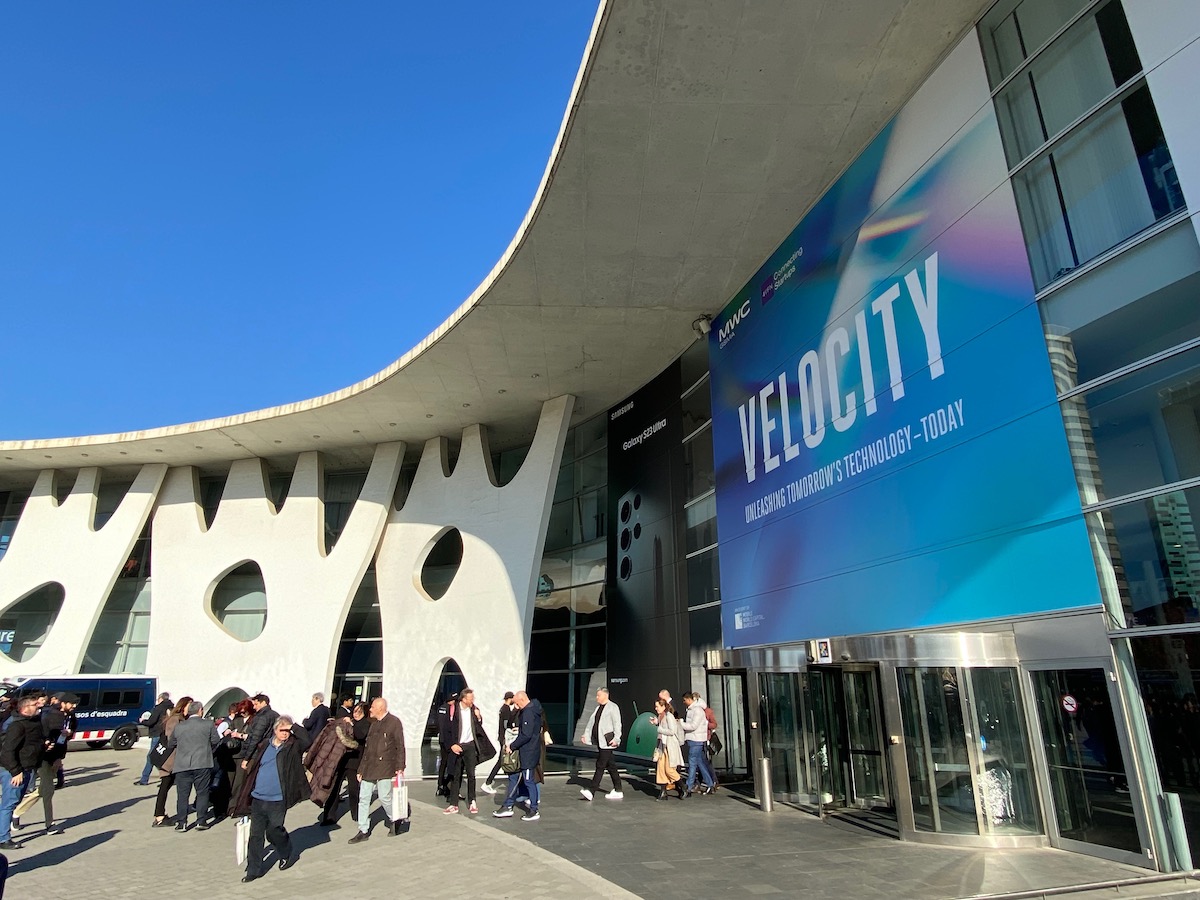MWC 23 is in the books, but there are still plenty of insights to digest from this year’s edition. Even though 5G was the main theme in Barcelona, 6G was given a good deal of attention, especially from big players.
Here we share five 6G demos or use cases that Nokia, Ericsson, SK Telecom, NTT Docomo, and InterDigital showcased at the event.
Nokia
The Finnish company made headlines on Sunday, when it unveiled its new logo and its business plans for the future – which include investments in 6G long-term research. The announcement aligned with what Nokia presented in its boot at MWC: besides 5G use cases currently working, two 6G demos.
The first one was a sneak peek at sensing capabilities. Nokia created a giant piano that uses a base station to sense exactly where the person is. As they move, the system identifies their location and plays the correspondent key. The base station operated at 27 GHz.
“[We didn’t invent radar, but] The fact that you can use communication signal at the same time for communications and sensing, and you do that without impairing the quality of the service of the communication [is disrupting],” said Peter Vetter, President of Nokia Bell Labs Core Research, during a press tour.
Still using the same base station, Vetter showcased a real-life use case for industries. A pedestrian crosses a garage entrance while a truck leaves the site. The vehicle can only move when the system senses the pedestrian is safe and out of the truck’s way.
“These two demos show how 6G is going to be different from 5G. These are 6G proof-of-concept systems. This is real,” Vetter added.
Nokia also presented a second solution, developed in partnership with NTT and Docomo: the AI-native air interface.
According to Vetter, the interface can recognise the channel conditions, and the two endpoints themselves figure out what is the best waveform, beamforming, or receiving setting, all in a dynamic way enabled by neural network technology. At the end of the day, the performance can improve by 30%, Vetter concluded.
Ericsson
Nokia’s competitor also brought 6G demos to MWC. Ericsson set up a separate place for attendees to “step into the future” and experience how 6G can change our relationship with the world.
The company showcased four solutions:
Zero-energy devices
Created in partnership with MIT, Ericsson developed a chip that harvests energy from the radio and can be attached to clothing and fabric, giving a sense of how 6G technology can help solve some sustainability issues.
Centimetric wave testbed radio
While sub-terahertz frequencies are still considered the leading candidate for leveraging the 6G full potential, several researchers started looking into other ranges, such as the 7-15 GHz or centimetric wave.
In this demo, Ericsson showcased a testbed radio encompassing two power amplifiers using centimetric wave frequencies.
Terahertz radio
Another demo was a terahertz transmission using Ericsson’s terahertz radio solution. The transmission reached 102.5 Gbps.
The last (or first, depending on where you started the 6G experience in the booth) was a sensing demo using Ericsson’s terahertz radio solution. As the system identifies that a user is out of reach, it pauses streaming a video.
SK Telecom
The South Korean operator made queues with its Urban Air Mobility (UAM) aircraft, but another section of SK Telecom’s booth caught our attention: the Beyond 5G and 6G station.
The company outlined its vision of how 6G will impact the world and showcased some products and experiments it has been developing in partnership with other players.
SK Telecom displayed a set of glass antennas already in use in South Korea; a terahertz transmission using this glass antenna; an Open RAN module prototype; quantum security solutions, and an air-conditioning management system with enhanced controls.
NTT Docomo
NTT’s booth was all about the use cases for the next generation of networks. It included a presentation of the Japanese operator’s view on 6G and simulations of future 6G use cases:
- Haptics: A sensor that transmits different vibrations according to the surface touched
- Virtual and extended reality: NTT’s metaverse and a solution for virtual concerts
- Motion sharing: Two demonstrations: a set of equipment that transfer movement from one person to another (in this case, from the leading drummer to his students) and a robot that replicates a human’s movement (some argued that this year’s demonstration on motion sharing left a lot to be desired).
The video below displays the demos appearing in the same order:
InterDigital
Technology research and development company InterDigital also brought some interesting work in the video department.
One is a technology that captures only the person’s face and translates it into a 3D avatar in real-time. The advantage of using this approach – instead of capturing the entire body motion – is that you can still have detailed information and less data consumption, making it feasible for mobile networks to transmit.
InterDigital also showcased its immersive video codecs for future extended reality experiences. The company shared a volumetric video recorded using MPEG V3C – a codec for XR media – being streamed to a smartphone and a tablet.

Journalist since eight years old, when I would read the newspaper out loud and pretend it was a radio show. Based in São Paulo, I have worked for Brazilian websites as reporter and editor before joining 6GWorld





